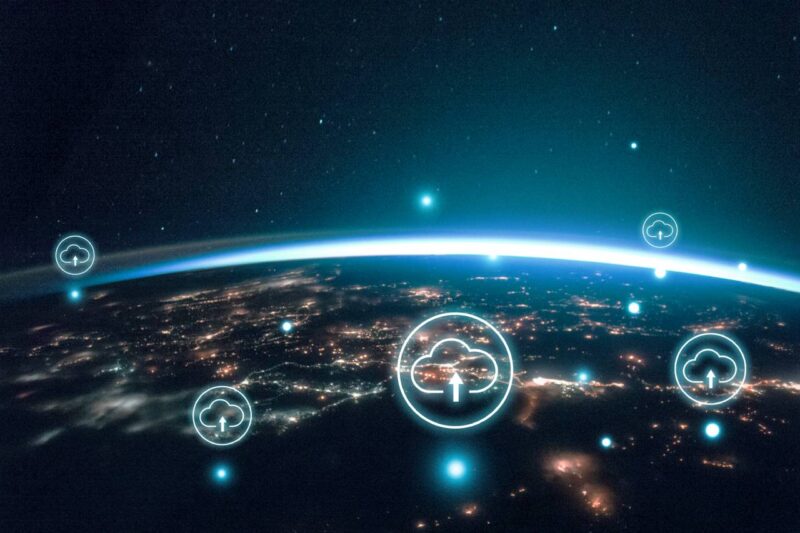Imagine yourself at a cabin in the mountains or a village miles away from the nearest city while streaming your favorite show, making a video call, or gaming online. Unbelievable, no?
Well, here comes Starlink, the bold satellite internet venture of SpaceX, which is turning the dream into a reality for millions.
Such heavenly strings of low Earth orbit satellites allow Starlink to emit high- speed internet anywhere and everywhere around this world without wires or cell towers.
However, is it actually the future of global connectivity? Let us have a look at what makes Starlink an innovator and what still needs improvement.
Is Starlink Internet Worth the Cost for Remote Locations?
People living far and wide considered reliable internet a mere dream. Traditional broadband service has never made it to the outskirts, leaving some communities stuck with slow, outdated connections or absolutely nothing. Starlink changes this. The satellites’ internet-from-space system does not require ground cables or towers.
Rural users rave about the speed range of 50 to 150 Mbps and occasionally even 300 Mbps in ideal conditions. That’s a huge jump from the old days of HughesNet or Viasat satellite services running at a snail’s pace of about 10 to 25 Mbps! From Netflix streaming to home office working to schooling kids, Starlink is really adding value.
It is, however, not perfect. Heavy rain, snow, or storms can interfere with the signal, and that will leave you offline when the weather gets rough. These interruptions are rare, but something to mention if you live in an area that suffers from extreme weather. But for rural homes, Starlink is a lifeline that is rewriting the rules of the game.
How Fast and Affordable Is Starlink Internet for Everyday Life?
Starlink is designed not only for off-the-grid enthusiasts but everyday users who want reliable internet without too much fuss. With download speeds of 50 to 150 Mbps and upload speeds of 10 to 30 Mbps, it tackles everything from HD TV binge-watching to Zoom conferencing and online gaming. Low latency at under 20-40 ms is a great plus for smooth real-time applications like video chatting or competitive gaming, far more than what was possible on older satellite service.
Pricing is very much location-dependent. In the rural areas where Starlink has very few competitors, $120 a month seems quite a bargain for what it offers. In flat metropolitan areas where one can get fiber or cable plans selling gig-speed for less, it is not so competitive. Still, it is the portability that really distinguishes Starlink for people traveling, working remotely, and needing internet while on the move. You can pack your dish up and take it anywhere—this level of portability is rare in broadband.
The price is on the high side, however, a fine combination of speed, reliability, and flexibility makes it a very attractive option for people who really need it.
READ ALSO: Why Are Users Excited (or Not) About iOS 18.4?
What Are the Upsides and Downsides of Starlink Internet?
Like any technology, Starlink Internet has its advantages and disadvantages. Here is the summary:
Pros:
Worldwide Reach: From rural farms to research stations in Antarctica, Starlink takes the internet where it cannot penetrate. It is a life-support for underprivileged communities.
Decent Speed: 50-150 Mbps, generally good enough for streaming, gaming, and remote work, with occasional spikes even higher.
Little Latency: LEO satellites don’t equate to our former troublesome satellite internet types; they are responsive for video calls and online gaming.
Take It Anywhere: Perfect for RV campers or boaters, or indeed any person on the move, the portable nature is a key selling point for Starlink.
Cons:
Hefty Initial: Laffed the $599 equipment fee and then the additional $120 monthly costs could be a stumbling block, especially where alternatives that are cheaper are available.
Weather Woes: Heavy storms or snowfall may disrupt service and make it annoying in harsh environments.
Irregular Coverage: Starlink Internet is rural-centric, thus urban users or those residing in specific places might have to wait on a waiting list or will be unable to access.
Increased Rivalry: Some of the upcoming projects include that of Kuiper by Amazon, which could shake the industry in terms with which consumers might see better pricing or features in the future.
READ ALSO: Tips and Tricks for Smarter Searching with DeepSeek AI
The Bottom Line: Starlink Internet – The Future?
Starlink is for those who were abandoned by Internet providers in the past, a revolution. It delivers speed, reliability, and connectivity, and lastly, it becomes a lifeline for rural and remote users, ultimately democratizing connectivity. From the management of crops online by farmers to families remaining connected from different continents, Starlink Internet is making the internet feel truly global.
1. What is Starlink Internet and how does it work?
Starlink is a satellite-based internet service developed by SpaceX. It uses a constellation of low-Earth orbit (LEO) satellites to deliver high-speed internet access, particularly in remote or underserved areas where traditional broadband is limited or unavailable.
2. How fast is Starlink Internet?
Starlink currently offers download speeds ranging from 25 Mbps to over 200 Mbps, with upload speeds between 5 Mbps and 20 Mbps, depending on location, network congestion, and equipment. Speeds continue to improve as more satellites are launched.
3. Where is Starlink available?
Starlink is available in over 70 countries worldwide, with expanding coverage. Availability depends on regulatory approvals and satellite deployment. You can check availability for your address on the official Starlink website.
4. How much does Starlink cost?
As of now, Starlink residential service typically costs around $120/month, with a one-time equipment fee of about $599. Prices may vary by region and service type (residential, RV, business, etc.).
5. Does weather affect Starlink performance?
Yes, severe weather like heavy rain, snow, or dense cloud cover can temporarily reduce Starlink signal strength and internet performance. However, the system is designed to be resilient in most weather conditions.












